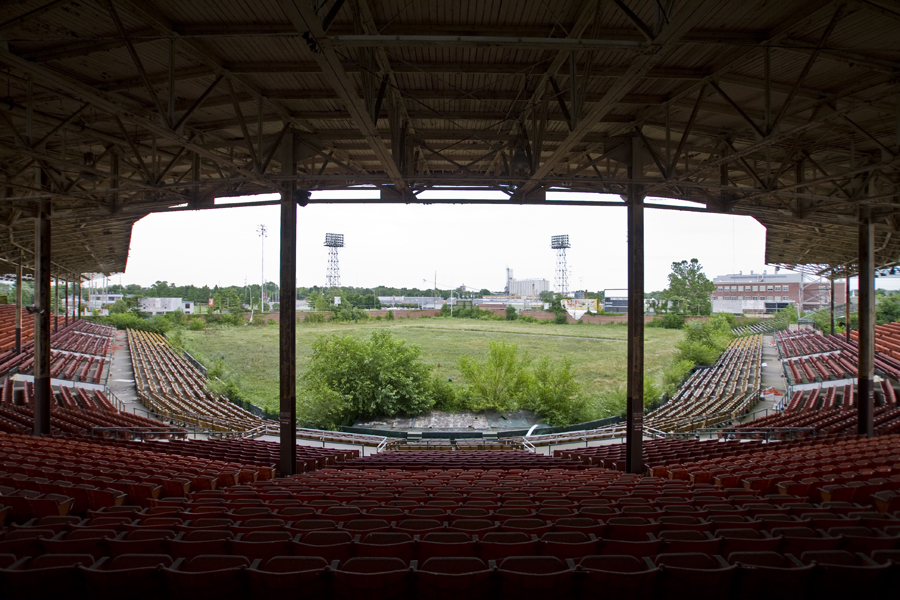"Heading For Home" Documentary Showcases The Rebirth of an Abandoned Baseball Stadium Previously Documented on QC/D
 |
| - Bush Stadium in Indianapolis as seen in a 2009 QC/D update. |
Back in 2009, I had the opportunity to explore the defunct Bush Stadium. Once home to the AAA level Indianapolis Indians, the stadium was abandoned midway through the 1996 season before temporarily serving as a dirt racetrack. After the racetrack closed, the stadium fell into the hands of the Indy Parks Department and by the time we shot out photos in 2009, the future of the stadium seemed uncertain.
Then, things changed...
 |
| - Bush Stadium turnstiles as seen in 2009. |
In 2011, the city of Indianapolis and private developers came together with a plan to renovate the stadium into apartments and lofts. The stadium underwent extensive renovations, but still features its iconic lights and many of its art deco features. It's maybe one of the best examples of historic reuse currently in the United States.
Five years ago, I had traveled to Indy from Cincinnati with my dad, my cousin Jeff and my friend Jesse. Thanks to the Indy Parks Department, we had the opportunity to take in free reign of the stadium: exploring everything from the overgrown field to the grandstands to the press box and locker rooms.
Bush Stadium wasn't just a unique abandoned location in that it was once a 12,000+ seat baseball stadium, but in the fact that it also held so much history. It's ornate art deco design was reminiscent of the great depression era - a symbol of pride and triumph during a time of economic turmoil when baseball's popularity was reaching new heights. It became the gathering place for Indy's baseball fans, a city that would eventually secure NFL and NBA teams, but never seemed to become a major market for professional baseball. Nevertheless, folks in Indy could take in America's game at a ballpark that had all the charm of Wrigley Field and Fenway Park without the tourist trap atmosphere and fair weather fans. They'd get to see the prospects of tomorrow come through for teams like the Braves, Expos, Pirates, Indians, Brewers and Reds. Before making the trip to Cincinnati, Reds greats such as Ken Griffey Sr., George Foster, Dave Concepcion and the Boone brothers all played games at Bush Stadium.
For someone who loves baseball and urban exploration, Bush Stadium was one of my favorite locations to have seen since starting QC/D in 2007.

After we left though, the future of the ballpark hung in the balance. The field was used to house cars from the "Cash for Clunkers" program, but that's about all the use it saw. Then, in 2011, a plan was put into action to save the ballpark, adapt it and reuse it. Bush Stadium was born in an era as a symbol of overcoming the Great Depression, a state of flux and rebirth in America. These days, as trends turn towards revitalizing cities, Bush serves as that symbol again - a prime example of adaptive reuse and historical redevelopment.
Earlier this year, I had the opportunity to contribute some photographs from the 2009 visit to the documentary "Heading for Home: Adaptive Reuse in the Circle City." Produced by Ball State University students Kayla Eiler and Alina Beteringhe, the 30 minute film tells the story of Bush Stadium and its importance to the city of Indianapolis. It's worth a watch and an excellent example of a question becoming more common in revitalizing American cities: how do you save history?
The 2009 visit to Bush Stadium was documented here and you can check out the documentary for free on Youtube, below: